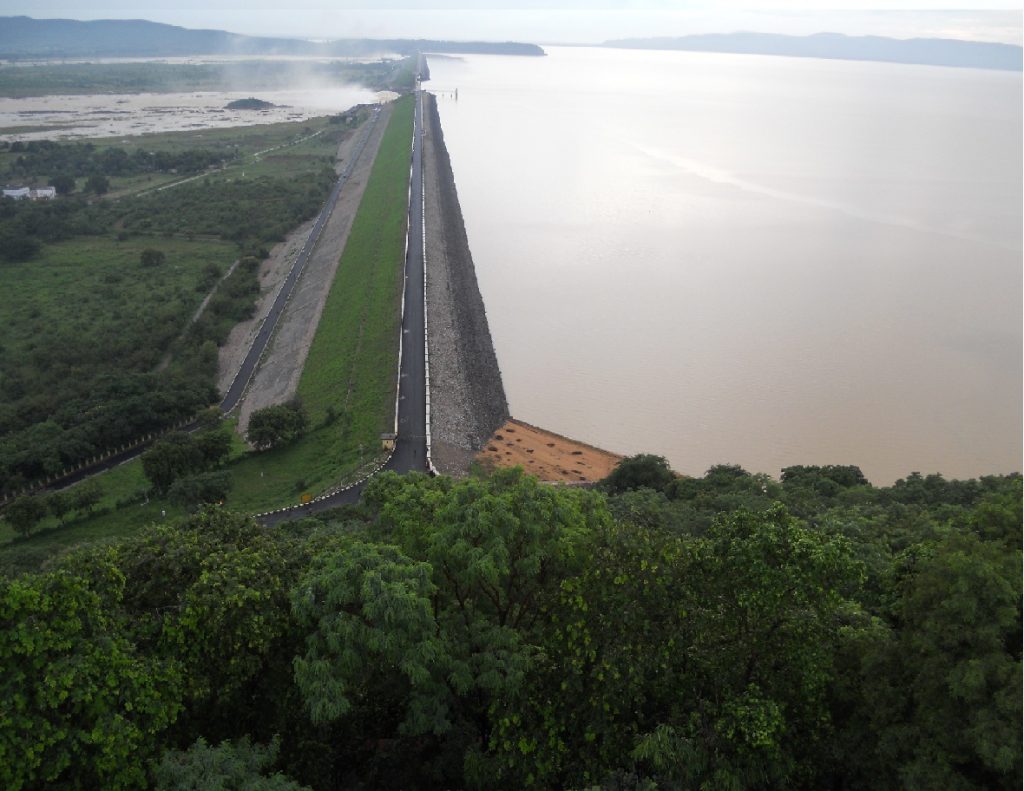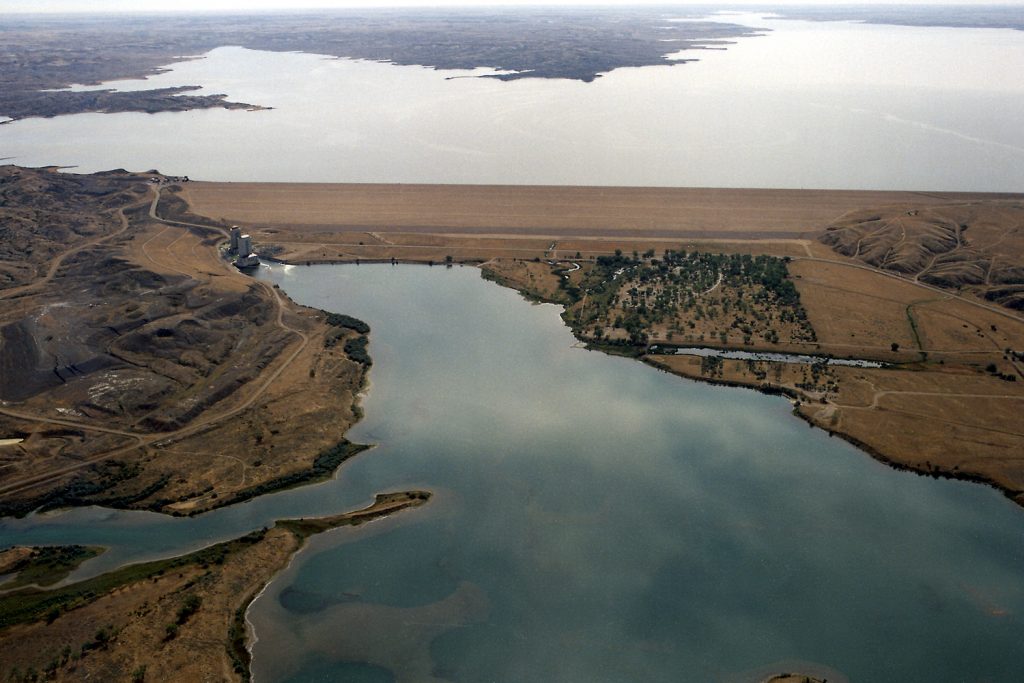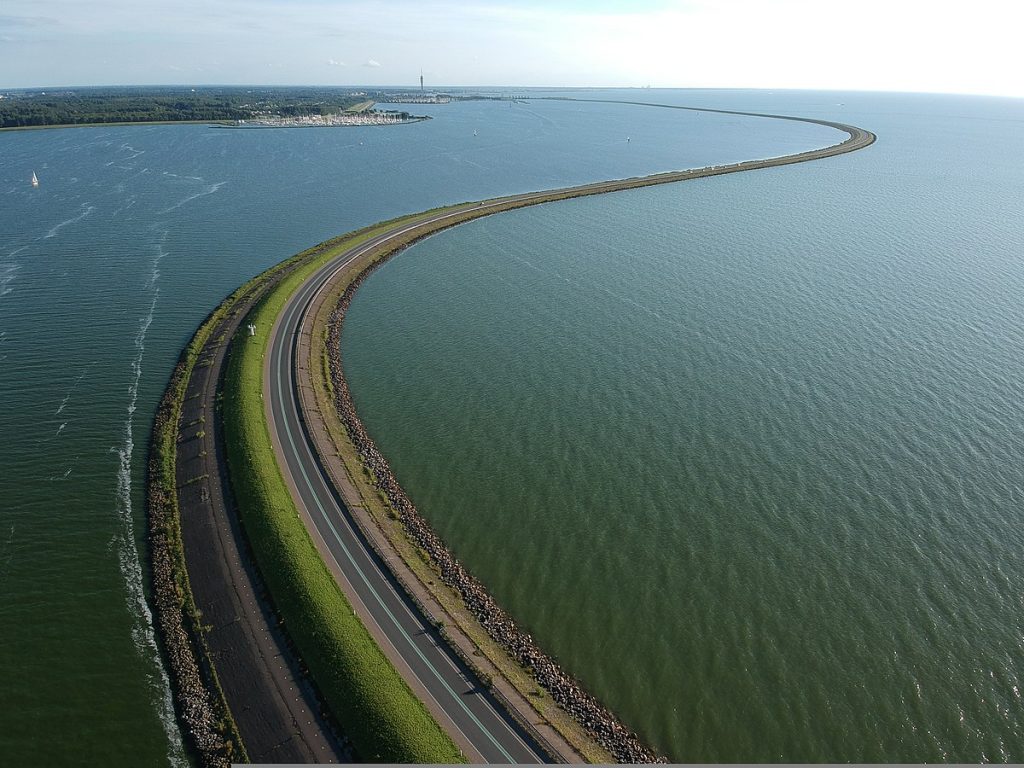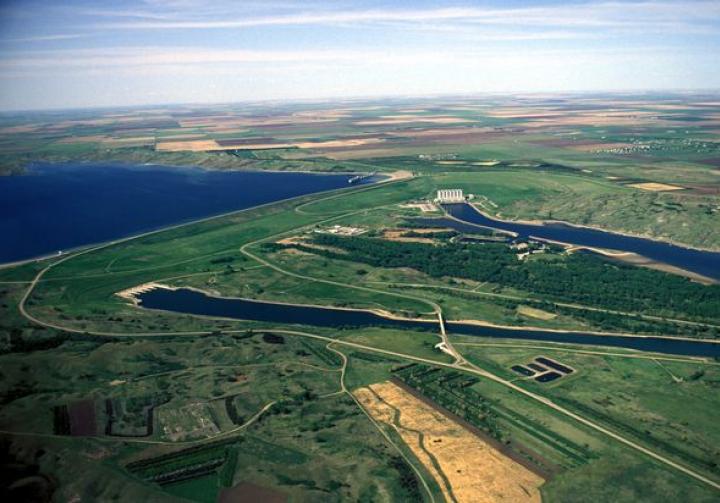What is a dam?
Dams are built to control and store water. Dams are made from earth, stacked rock or concrete, and are usually constructed across rivers to store water in the reservoir that is formed behind the dam as a result of the river being blocked.
How do dams work?
Dams store water in the reservoir formed behind the dam. The stored water can be used for various consumptive purposes, including use as water for irrigation, or as sources of drinking water for urban and regional towns and cities. The stored water can also be discharged from the reservoir during the times that natural flows in downstream rivers are inadequate to help meet a variety of environmental objectives.
Depending on the catchment area for the dam, the water stored in dam reservoirs is usually easier to treat to a drinking water standard than other sources of drinking water, such as run of river supplies. This is because the long time spent in storage usually improves the quality of the water stored in the reservoir.
Definition of a large dam
The International Commission on Large Dams defines a large dam as one which is:
- More than 15 metres in height measured from the lowest point of the general foundations to the crest of the dam,
- More than 10 metres in height measured as in (a) provided they comply with at least one of the following conditions:
- The crest is not less than 500 metres in length
- The capacity of the reservoir formed by the dam is not less than 1 million cubic metres
- The maximum flood discharge dealt with by the dam is not less than 2000 cubic metres per second
- The dam is of unusual design
Here are 5 of the world’s largest dams:
Hirakud Dam is built across the Mahanadi River, about 15 kilometres (9.3 mi) from Sambalpur in the state of Odisha in India. Behind the dam extends a lake, Hirakud Reservoir, 55 km (34 mi) long. It is one of the first major multipurpose river valley projects started after India’s independence. The Hirakud Dam is a composite structure of earth, concrete and masonry. 10 km (6.2 mi) north of Sambalpur, it is the longest major earthen dam in India, measuring 25.8 km (16.0 mi) including dykes, and stands across the river Mahanadi.

Vital Statistics
Country: India
Year completed: 1976
Length: 4.8 km (3 mi) (main section) 25.8 km (16 mi) (entire dam)
Height: 60.96 m (200 ft)
Type: Composite dam and reservoir
Total capacity: 5,896,000,000 m3 (4,779,965 acre·ft)
Fort Peck Dam Tis the highest of six major dams along the Missouri River, located in northeast Montana in the United States, near Glasgow, and adjacent to the community of Fort Peck. It is the largest hydraulically filled dam in the United States and creates Fort Peck Lake, the fifth largest man-made lake in the U.S.

Vital Statistics
Country: United States
Year completed: 1940
Length: 21,026 ft (6,409 m)
Height: 250 ft (76 m)
Type: Hydraulic earthfill
Reservoir Capacity: 18,463,000 acre·ft (22.774 km3)
Atatürk Dam originally the Karababa Dam, is a zoned rock-fill dam with a central core[1] on the Euphrates River on the border of Adıyaman Province and Şanlıurfa Province in the Southeastern Anatolia Region of Turkey. Built both to generate electricity and to irrigate the plains in the region, it was renamed in honour of Mustafa Kemal Atatürk (1881–1938), the founder of the Turkish Republic.

Vital Statistics
Country: Turkey
Year completed: 1990
Length: 1,819 m (5,968 ft)
Height: 169 m (554 ft)
Type: Reservoir
Reservoir Capacity: 48,700,000,000 m3 (39,500,000 acre·ft)
Houtribdijk is a dike in the Netherlands, built between 1963 and 1975 as part of the Zuiderzee Works, which connects the cities of Lelystad and Enkhuizen. On the west side of the dike is the Markermeer and on the east is the IJsselmeer. Although called a dike, the Houtribdijk is actually a dam.

Vital Statistics
Country: Netherlands
Year completed: 1968
Length: 30 km
Height: 68 m
Oahe Dam is a large dam along the Missouri River, just north of Pierre, South Dakota in the United States. It creates Lake Oahe, the fourth largest artificial reservoir in the United States, which stretches 231 miles (372 km) up the course of the Missouri to Bismarck, North Dakota. The dam’s powerplant provides electricity for much of the north-central United States. It is named for the Oahe Indian Mission established among the Lakota Sioux in 1874.

Vital Statistics
Country: United States
Year completed: 1963
Length: 9,360 feet (2,850 m)
Height: 245 feet (75 m)
Type: flood control, earthfill
Reservoir Capacity: 23,137,000 acre feet (28.539 km3)
- World’s biggest single structure house 3D printed in one go - July 27, 2020
- Compulsory registration scheme for NSW professional engineers - June 29, 2020
- The Moore Shire Bituminised Road - June 22, 2020
- Bioinspired Structure with 3D Printing - June 15, 2020
- Doughnut Economics: Amsterdam’s Green Recovery Plan - June 1, 2020
- These 5 cities are turning roads into bike lanes because of coronavirus - May 18, 2020
- Four Australian among the world’s top ten universities best placed to solve the world’s biggest challenges - May 11, 2020
- This is how South Korea is balancing getting people back to work and protecting their health - May 4, 2020
- These 5 cities are turning roads into bike lanes because of coronavirus - April 20, 2020
- What is Concrete Temperature Limit? - April 13, 2020
